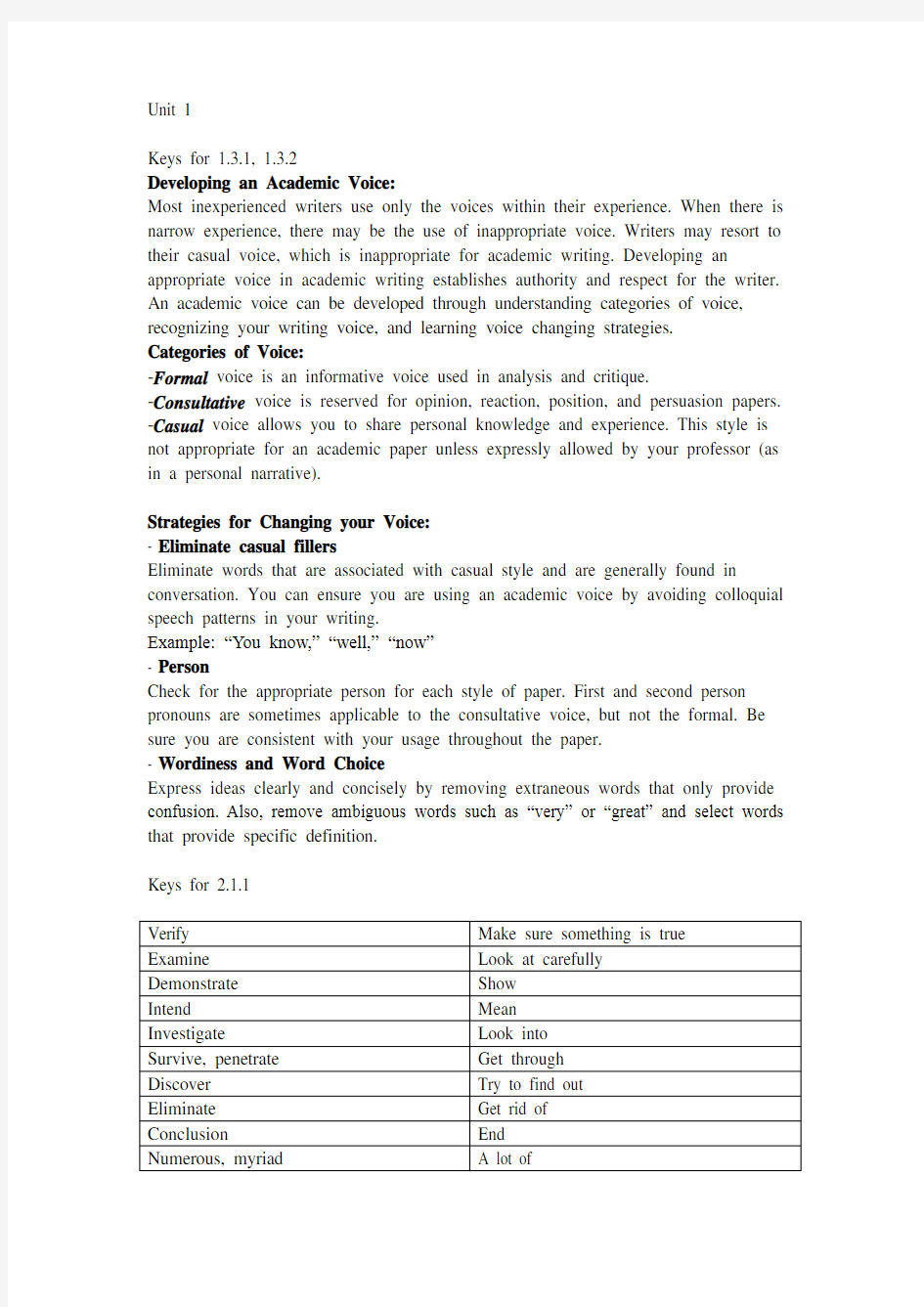
东南大学研一学术英语教程答案
- 格式:doc
- 大小:43.00 KB
- 文档页数:2


Unit 1
Keys for 1.3.1, 1.3.2
Developing an Academic Voice:
Most inexperienced writers use only the voices within their experience. When there is narrow experience, there may be the use of inappropriate voice. Writers may resort to their casual voice, which is inappropriate for academic writing. Developing an appropriate voice in academic writing establishes authority and respect for the writer. An academic voice can be developed through understanding categories of voice, recognizing your writing voice, and learning voice changing strategies.
Categories of Voice:
-Formal voice is an informative voice used in analysis and critique.
-Consultative voice is reserved for opinion, reaction, position, and persuasion papers. -Casual voice allows you to share personal knowledge and experience. This style is not appropriate for an academic paper unless expressly allowed by your professor (as in a personal narrative).
Strategies for Changing your Voice:
- Eliminate casual fillers
Eliminate words that are associated with casual style and are generally found in conversation. You can ensure you are using an academic voice by avoiding colloquial speech patterns in your writing.
Example: “You know,” “well,” “now”
- Person
Check for the appropriate person for each style of paper. First and second person pronouns are sometimes applicable to the consultative voice, but not the formal. Be sure you are consistent with your usage throughout the paper.
- Wordiness and Word Choice
Express ideas clearly and concisely by removing extraneous words that only provide confusion. Also, remove ambiguous words such as “very” or “great” and select words that provide specific definition.
Keys for 2.1.1
Key for 2.2
A conjunction connects words, phrases, or clauses and can also indicate the relationship between the elements it connects. In only one single sentence we often find that it contains one or more ideas which may be equal or unequal in importance. When the ideas are equal, they are called coordinate ideas. These sentences may be joined into a compound sentence that shows the relationship between the two ideas. When this is done in such a way that the equality of the ideas is maintained, we call the clauses in the new sentence coordinate clauses.
Keys for 3.1
1.Science magazine
2.advertisement
3.Hemingway’s short story: cat in the rain
4. a research paper
5. a newspaper
Keys for 3.2
Key for 3.3
There appear to be two principal reasons for the growing traffic congestion. Firstly, public transportation has become increasingly expensive in relation to the falling cost of driving. In addition, car ownership is more convenient than using public transportation, together these factors result in higher vehicle density.